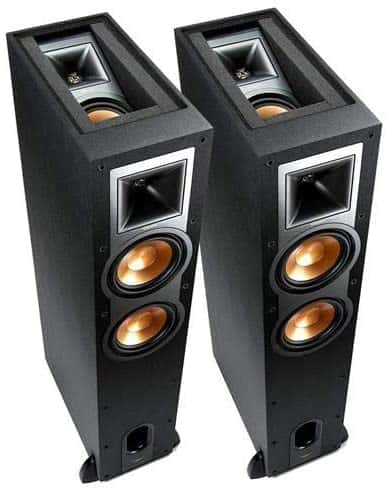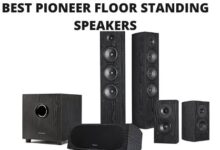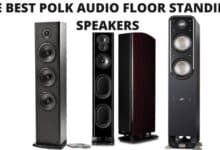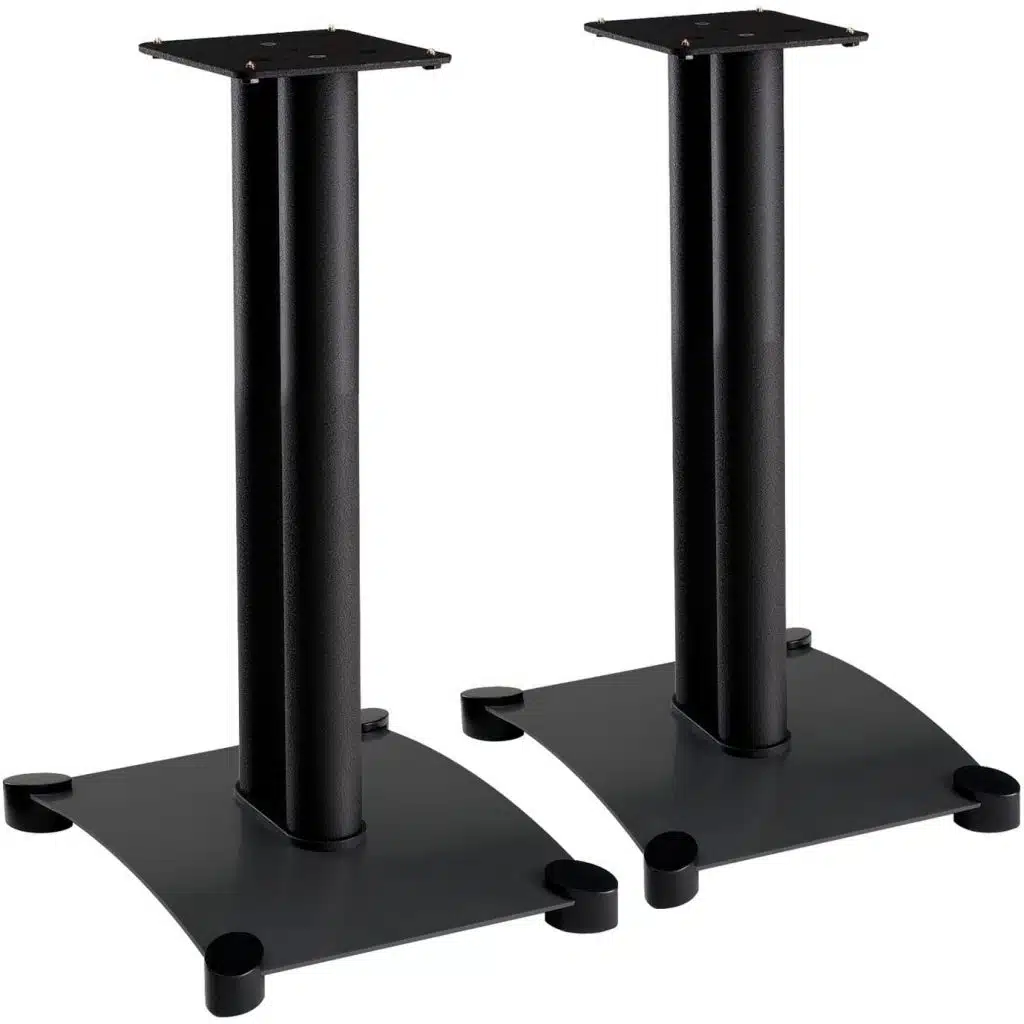Setting up your home speakers to deliver the best sound you desire from them requires a little calculation. You have to place them strategically in the room – in positions where they can fill the room with good sound.
So, how far apart should floor standing speakers be? Unlike satellite speakers or bookshelf speakers, floor-standing speakers can be installed anywhere around the room or hung on the walls.
If you have floor-standing or tower speakers, you must keep them reasonably apart.
You shouldn’t place two floor-standing speakers very close to each; yes, they’d still deliver loud, room-filling sound, but definitely not as they would if kept apart a little bit strategically.
Basically, it is advisable to place tower speakers (floor standing speakers) up to 2 inches away from the wall.
Table of Contents
How Far Apart Should Floor Standing Speakers Be?
When it comes to floor standing speaker placement, there are pretty many things to consider when setting up your home speaker locations, but the main three factors are:
- Your room size
- Where would you be sitting
- What type of speakers do you have? Passive or Active?
The explanations in this article would base on the three factors above. Here, the type of speaker is “Floor standing” speakers, also called tower speakers.
Most “audio experts” suggest that your speaker locations and the listening spot should form an equilateral triangle.
What does this mean? It means that the distance between you and the speakers should be the same as the space that keeps them apart.
This is the basic guideline for tower speaker placements, especially if you’ve got just a pair; one of the speakers stands on the right sight, the other on the left side, and then your listening position would be adjacent – while the distances remain equal.
To further explain the rule above, we mean to say that – in a standard, medium-sized room – if you keep 2-floor standing speakers at 12ft distance apart, you should also be seated at a distance of 12ft away from the speakers, but in an EQ triangle form.
Now, this is just for tower speakers; if you also got rear speakers, this rule doesn’t work 100% for them; instead, you should follow the instructions in the speaker manual.
But the rear speakers don’t need to lap on the wall – you should keep them at least 8 inches away from the wall. An exception to this is if you’re hanging the rear speakers.
Furthermore, if you search in fora, many “acclaimed” audio experts suggest you keep the speakers 75% – 100% of the distance to your ear.
The distance calculation should be made from the center of the speakers. This rule; implies that if you’d be listening to the sound at a distance of 15ft away, the distance between the speakers should either be 15ft or anywhere between 75% – 100% of the space, which is from 12ft to 15ft.
Do You Need Speaker Stands For Floor Standing Speakers?
Raising your floor standing speakers above the ground can be a great idea to improve the sound quality you’re getting. However, it is not compulsory to use speaker stands – and it’s not mandatory to use a stand.
Speaker stands for floor standing speakers that are just “fancy.” However, to some people, they are a worthwhile investment because they aid in moving the speakers from one location to another – talking about speaker stands with wheels.
Notwithstanding, some tower speakers come with wheels and are designed to stand alone – not be placed on stands (just on the floor, as the name implies).
You’d definitely need speaker stands if you have bookshelf speakers or small surround speakers you need to transmit sound over a long distance. A stand would help those speakers to send sound over a long distance.
Note: Tower speakers and floor standing speakers are the same; the words can be used interchangeably.
The whole philosophy about the speaker stands the distance from your listening spot to where the speaker is placed.
If the room is enormous, you may need a speaker stand to push the sound from your tower speaker farther. In contrast, if it’s a small room, investing in stands for tower speakers would be practically a “waste” of money.
What Happens When You Place Speakers Closely
Your speakers would still sound regardless of how you place them around the room. However, the essence of following audiophile placement guidelines is to get the best sound quality and room-filling audio.
Apparently, if your speakers are not well placed, you may sit in one corner of the room and not clearly hear what’s playing.
You may hear distorted sound when your speakers are too close – whether floor-standing speakers or any speaker. More so, the sound waves would blend together, which may result in you hearing a muddy sound.
Similarly, if the speakers are far apart, you’d notice a “gap” in the sound you hear. That said, in placing your floor-standing speakers, they shouldn’t be far apart and shouldn’t be too close, either.
The rule of forming an equilateral triangle with your listening position and your speakers remains one of the best home speaker setup guides for everyone. Even if it doesn’t work for you, it gives you a clue on how to go about placing your speakers.
Summary
Undoubtedly, many people set up their speakers with their “ears.”
What does this imply? It implies that some homeowners would manually place their speakers in different positions and listen to the sound quality they could get from placing the speakers at those positions; when they’re not satisfied with the quality they got, they will adjust to other positions.
Regardless, we hope that this article clearly explains how you should place your speakers around your room.
More so, check your speakers’ user manual for instructions from the manufacturer on how to use/place the speakers around the room.
Q: How do I determine the ideal distance between floor standing speakers?
A: The ideal distance between floor standing speakers depends on various factors such as room size, speaker specifications, and listening preferences. However, a general guideline is to position them at an equal distance from each other and form an equilateral triangle with the listening position.
Q: Should the distance between floor standing speakers be adjustable?
A: Adjustable distance between floor standing speakers can offer flexibility in soundstage and imaging. Some speakers allow adjustable toe-in angles and positioning options, allowing you to fine-tune the speaker placement based on your room’s acoustics and personal preferences.
Q: What effect does speaker placement have on sound quality?
A: Proper speaker placement can significantly impact sound quality. Placing floor standing speakers at an appropriate distance and angle helps in achieving better imaging, soundstage, and overall balance. It can enhance stereo separation and deliver a more immersive listening experience.
Q: Can I place floor standing speakers closer together for a smaller room?
A: Yes, for smaller rooms, you can place floor standing speakers closer together to optimize the soundstage and stereo imaging. However, it’s crucial to maintain a balance to avoid excessive blending of audio channels and potential loss of stereo separation.







